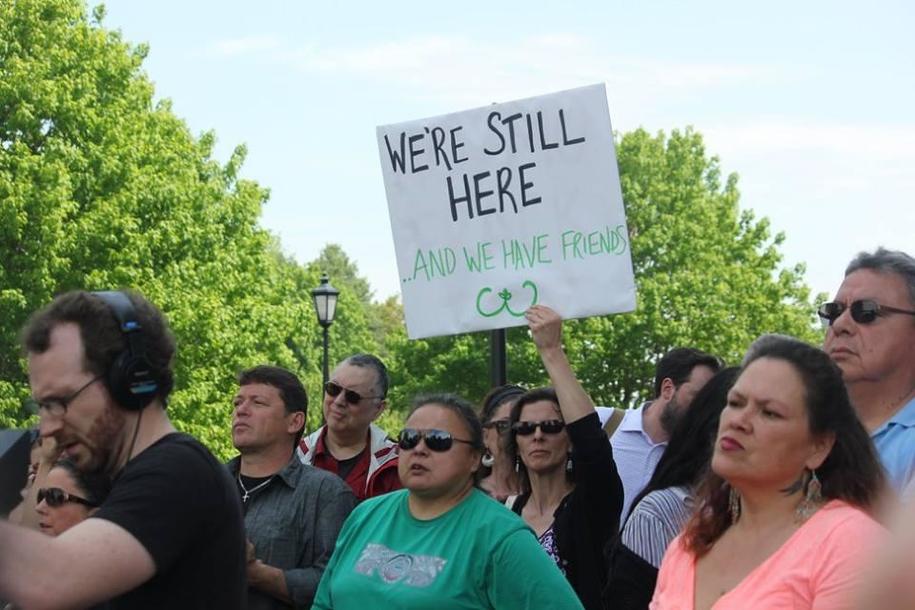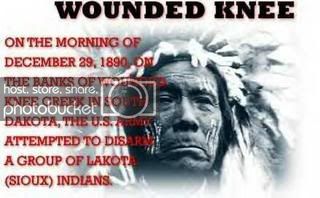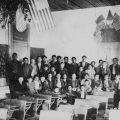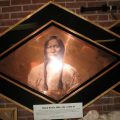 Maine-Wabanaki REACH (Reconciliation-Engagement-Advocacy-Change-Healing) began as a collaboration of state and tribal child welfare workers who knew from their work together that children, families, and communities need truth, healing and change. — see logo ↓ below An activity in observance of our next Greater United States’ national holiday, Indigenous Peoples Day Oct. 14 @ 3pm EDT/noon PDT, is watching a Free online screening of the 2018 Emmy-winner documentary feature-length film “Dawnland” (86 minutes) followed by 35 minute chat with Adam Mazo. Mishy Lesser and Tracy Rector. Register to participate: https://ovee.itvs.org/screenings/em6ic The instructive Emmy Award acceptance speech (3 minutes) is worthwhile watching @ https://vimeo.com/362874596 Download Teacher’s Guide with hyperlinked footnotes here: https://dawnland.org/wp-content/uploads/2019/09/DawnlandTeachersGuide_190923-FINAL-compressed.pdf For decades, child welfare authorities have been removing Native American children from their homes to save them from being Indian. In Maine, the first official “truth and reconciliation commission” (TRC) in the United States begins a historic investigation. DAWNLAND goes behind-the-scenes as this historic body grapples with difficult truths, redefines reconciliation, and charts a new course for state and tribal relations.[Maine Wabanaki-State Child Welfare Truth and Reconciliation Commission {TRC)]
Maine-Wabanaki REACH (Reconciliation-Engagement-Advocacy-Change-Healing) began as a collaboration of state and tribal child welfare workers who knew from their work together that children, families, and communities need truth, healing and change. — see logo ↓ below An activity in observance of our next Greater United States’ national holiday, Indigenous Peoples Day Oct. 14 @ 3pm EDT/noon PDT, is watching a Free online screening of the 2018 Emmy-winner documentary feature-length film “Dawnland” (86 minutes) followed by 35 minute chat with Adam Mazo. Mishy Lesser and Tracy Rector. Register to participate: https://ovee.itvs.org/screenings/em6ic The instructive Emmy Award acceptance speech (3 minutes) is worthwhile watching @ https://vimeo.com/362874596 Download Teacher’s Guide with hyperlinked footnotes here: https://dawnland.org/wp-content/uploads/2019/09/DawnlandTeachersGuide_190923-FINAL-compressed.pdf For decades, child welfare authorities have been removing Native American children from their homes to save them from being Indian. In Maine, the first official “truth and reconciliation commission” (TRC) in the United States begins a historic investigation. DAWNLAND goes behind-the-scenes as this historic body grapples with difficult truths, redefines reconciliation, and charts a new course for state and tribal relations.[Maine Wabanaki-State Child Welfare Truth and Reconciliation Commission {TRC)]
background brief: In 1978, the Indian Child Welfare Act (ICWA, Public Law 95-608) was passed to re-establish tribal authority over Native children, due to high rates of state removal of children. Things didn’t change so Maine enacted its TRC 35 years later in 2013.
Maine-Wabanaki TRC logo
Molly Newell & Carol Wishcamper light the Sacred Fire to begin the Community Listening session / Maine-Wabanaki TRC
At the end of the TRC Listening, this fire was used in The Burning of the Tears ceremony.
After the movie please stay online so you can ask questions of the film team in a live online chat.
Learn more about the film and watch the trailer at https://dawnland.org/ In lots of schools across the United States, one timeline of Native American history goes something like this: Christopher Columbus, Thanksgiving, Pocahontas, Trail of Tears. For contrast, consider how we many were taught The Creation Story: Dr. Franklin smote the earth with His electric rod and out sprang George Washington, Declaration of Independence in his hand, who was then painted into a rowboat oared by “We the People” packing a constitution wand, Abe Lincoln.
The Dawnland Teacher’s Guide spans millennia, beginning tens of thousands of years ago and ending in the eighteenth century with scalp proclamations that targeted Native people for elimination. Many important moments, events, documents, sources, and voices were left out of the lessons you are about to read because they can be accessed elsewhere. We encourage teachers to consult and use the excellent resources developed by Tribal educators, such as:
Schoodic River Keepers: First Nation Original Stewards https://schoodicriverkeepers.co
Passamaquoddy-Maliseet Language Portal https://pmportal.org/
Indian Education for All (Montana OPI) https://opi.mt.gov/Educators/Teaching-Learning/Indian-Education
Since Time Immemorial: Tribal Sovereignty in Washington State https://www.k12.wa.us/student-success/resources-subject-area/time-immemorial-tribal-sovereignty-washington-stat
Haudenosaunee Guide for Educators –(Smithsonian National Museum of the American Indian in consultation with Haudenosaunee scholars & community members to help provide teachers better understanding of Haudenosaunee)
https://americanindian.si.edu/sites/1/files/pdf/education/HaudenosauneeGuide.pdf
One viewpoint is that “Wabanaki ” is an Anglicized spelling of “Waponahki ”. Many people use Wabanaki because it is in common usage by Indigenous scholars as well as Wabanaki tribal citizens and communities. Wabanaki Confederacy refers to a coalition of five Algonquian language group tribes of the eastern seaboard who banded together in response to Iroquois coalition operations in the mid-17th century. Abenaki, Penobscot, Maliseet, Passamaquoddy, and Micmac all retain their own political leadership. The term “Wabanaki” literally means “People of the Dawn” or “dawnland people.” There are a variety of spellings for the names of the tribal nations making up the Wabanaki Confederacy. Nation-state boundaries were imposed on tribal societies. Maine, Nova Scotia, New Brunswick, and Quebec occupy Micmac (Mi’kmaq, Mi’kmawi’simk, Mi’kaw, Mikmaq) Territory. Maine and New Brunswick occupy Passamaquoddy (Peskotomuhkati) Territory. Maine occupies Penobscot (Eastern Abnaki, Penahwubskeag, Penawahpskewi, Penobscott) Territory. Wabanaki in parts of New York State call themselves Abenaki.
A goodread is: “All The Real Indians Died Off” And 20 Other Myths About Native Americans by Roxanne Dunbar-Ortiz and Dina Gilio-Whitaker (Paperback, 224 pages; Pub. 4 Oct 2016; Beacon Press)
See also: Professor Robert J. Miller in Official video archive of presentation at the Indigenous Peoples Forum on the Doctrine of Discovery March 23, 2012 at the Arizona State Capitol House of Representatives https://www.youtube.com/watch?v=QBAqizD_7Ls
See also: Reclaiming Native Truth (a project to dispel america’s myths and misperceptions): Lessons Learned from Standing Rock, July 2018; free download: https://www.firstnations.org/wp-content/uploads/2018/12/Compressed-Standing-Rock-Report-Screen.pdf
Report of the Maine Wabanaki-State Child Welfare Truth & Reconciliation Commission with Recommendations — Presented on June 14, 2015
DAWNLAND Viewer’s Guide free download here: https://dawnland.org/wp-content/uploads/2019/09/DAWNLAND_VIEWERS-GUIDE_190923-compressed.pdf This guide is written for viewers who want to learn more about the issues behind the film, DAWNLAND.
First government-sanctioned truth and reconciliation commission in the United States begins a bold journey. For over two years, Native and non-Native commissioners travel across Maine. They gather testimony and bear witness to the devastating impact of the state’s child welfare practices on families in Maliseet, Micmac, Passamaquoddy and Penobscot tribal communities. Collectively, these tribes make up the Wabanaki people.” ▬Adam Mazo / Ben Pender-Cudlip
Dawnland on fb: https://www.facebook.com/DawnlandMovie/ Dawnland was filmed in the territory of AROOSTOOK BAND OF MICMACS, HOULTON BAND OF MALISEET INDIANS, PASSAMAQUODDY TRIBE AT MOTAHKOMIKUK, PASSAMAQUODDY TRIBE AT SIPAYIK, PENOBSCOT INDIAN NATION. It is an UPSTANDER PROJECT FILM [Upstander Project helps bystanders become upstanders through compelling documentary films and learning resources ▬Upstander Project films include First Light, the debut film in the series, anchored by the feature film Dawnland, and Coexist ▬ The newly released sequel to Dawnland is Dear Georgina (15 Sept 2019, 16 minutes, biography) in which Passamaquoddy elder Georgina Sappier-Richardson tries to sharpen the blurry outlines of her identity.]
Video: Statement by Georgina Sappier Richardson collected by Rachel George on 19 Feb 2014, (55 minutes); Maine Wabanaki-State Child Welfare Truth and Reconciliation Commission: Statements. 31. https://digitalcommons.bowdoin.edu/maine-wabanaki-trc-statements/31 ▬source: Bowdoin College, archived. ▬ This series includes audio and video recordings, as well as related transcripts, of all unrestricted statements by individuals that are part of the TRC archives. Statement providers include Wabanaki elders, children once in foster care and their family members, foster and adoptive parents, tribal leaders, service providers, incarcerated people, attorneys and judges, caseworkers, and administrators from the tribes and from the Department of Health and Human Services (DHHS). Some statement providers requested anonymity, and in those cases, both the transcripts and recordings have been altered to protect participants’ identities. These personal memories provide a window into the realities of the relationship between Wabanaki people and the state of Maine. As evidenced by the recordings themselves, the process of providing statements was often an emotional one for participants. Readers should be aware that many of the statements contain challenging and disturbing content. The statements are made available online with the hope that broader access to these important historical records will further our understanding of this difficult past and lead to improved child welfare practices for Wabanaki families. Bowdoin does not hold copyright for these materials. They are made available for research and educational purposes, and with the permission of the TRC and individual statement providers. For all uses outside of “fair use” (as defined by Title 17, United States Code), including derivation, publication, and reproduction, researchers must secure permission from the copyright holders, typically the individual statement providers.
Sign up to watch a special online screening of the Emmy Award-winning documentary “Dawnland“: https://ovee.itvs.org/screenings/em6ic
The film explores the first Truth and Reconciliation Commission (TRC) between a sovereign tribal nation (the Wabanaki) and a U.S. state (Maine) – a process that was supported by AFSC (American Friends Service Committee – a Quaker organization). Learn more in this interview with AFSC’s Denise Altvater, who played an instrumental role in the commission.
After DAWNLAND, stay online to chat with:
Adam Mazo working as the director of the Upstander Project and co-director and producer of First Light, and the feature-length film, Dawnland. Adam also directed and produced Coexist (WORLD Channel, Africa Movie Academy Award Nominee). Adam co-founded the Upstander Project in 2009. Mishy Lesser, Ed.D. working as the learning director for the Upstander Project and Education Fellow at the Thomas J. Dodd Research Center at the University of Connecticut. She is co-director of the Upstander Academy, a weeklong professional learning experience for teachers and museum educators that focuses on genocide and decolonization and the skills of upstanders. Currently Dr. Lesser spends much of her time researching and writing the teachers’ and viewers’ guides for Dear Georgina and Bounty. Mishy authored the twelve-lesson Dawnland Teacher’s Guide to help students explore the relationship between the taking of the land and the taking of the children, and the four-lesson Coexist Teacher’s Guide to promote learning about the complexity of reconciliation in post-genocide Rwanda. She is a Circle Keeper and has been featured on WBUR (Boston) and PRI/BBC’s The World. Mishy was a Fulbright Scholar in Ecuador and spent 12 years learning and working in the Andes. Tracy Rector (Choctaw/Seminole) working as the impact producer for Dawnland and the Upstander Project. She is a mixed race filmmaker, curator, community organizer, co-founder of Longhouse Media. She has made over 400 short films, and is currently in production of her fifth feature documentary. Her work has been featured on Independent Lens, Cannes Film Festival, ImagineNative, National Geographic, Toronto International Film Festival, and in the Smithsonian’s Museum of the American Indian. She is a current Firelight Media Lab Fellow, WGBH Producer Fellow, and Sundance Institute Lab Fellow. Raised in Seattle and Albuquerque, Tracy lives in Seattle and sits as a City of Seattle Arts Commissioner.
With that said, if I am mistaken in any of the above words, I ask that you pity me for it’s the best I can do at this time. I wish I could do better.




Leave a Reply